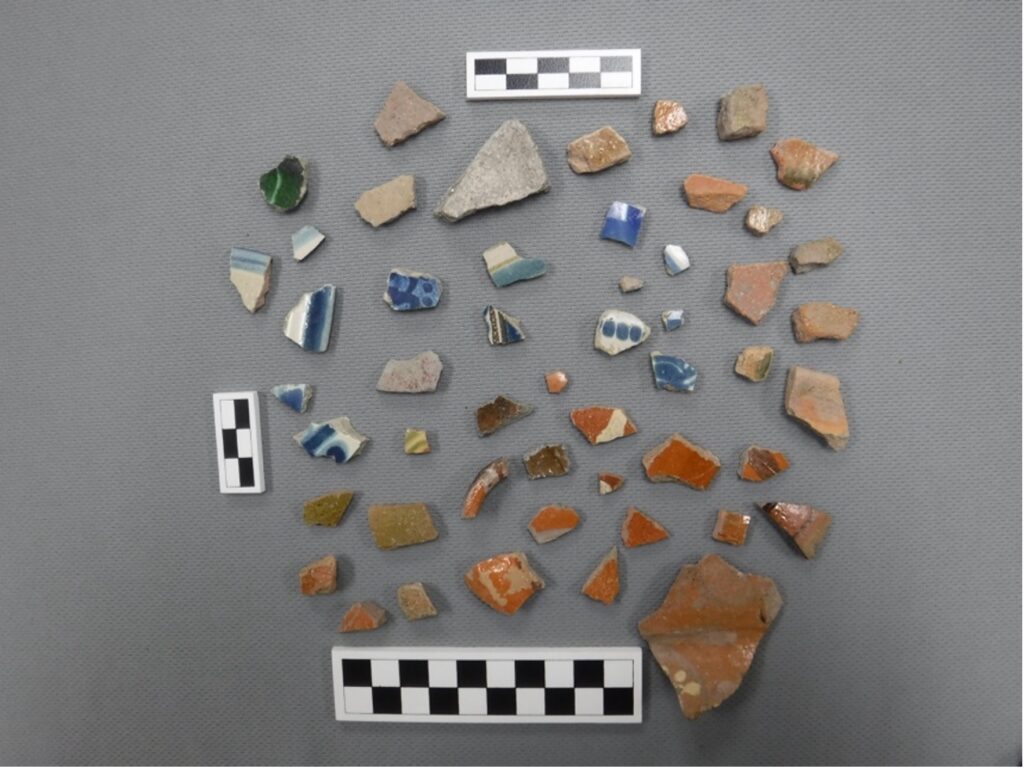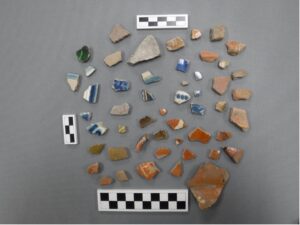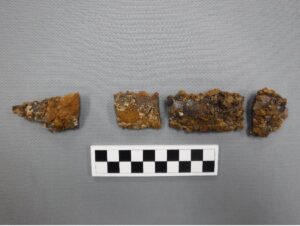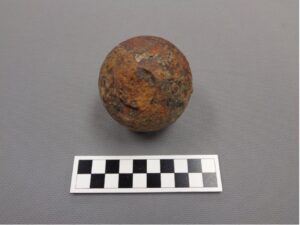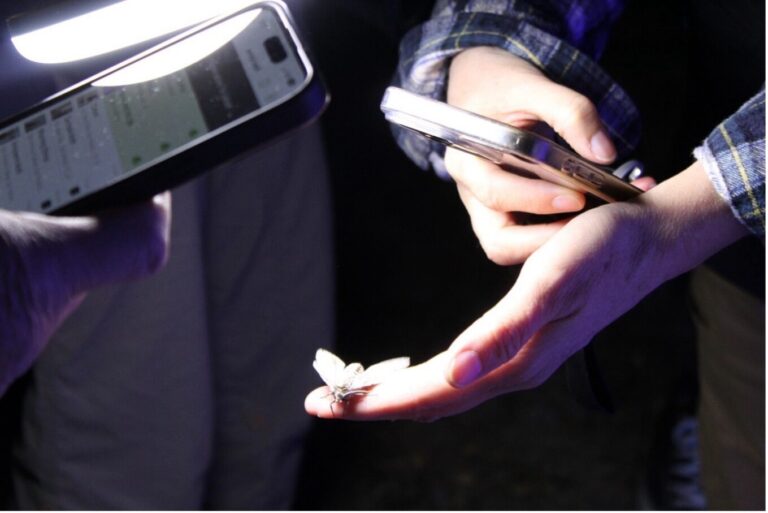In celebration of Juneteenth, San Antonio River Authority (River Authority) joins the community to reflect on the significant strides toward freedom and equality, epitomized by the archaeological discovery at San Pedro Creek Culture Park.
As we learned in a previous blog, this pivotal finding brought to light the historical foundations of the St. James African Methodist Episcopal Church (St. James AME Church). Formerly buried beneath a parking lot, this place has again become a symbol of the rich and diverse history of San Antonio.
Established in 1867, just two years after Juneteenth marked the end of slavery in Texas, St. James AME Church stands as a testament to the resilience and determination of the African American community during the Reconstruction era, reflecting the newfound religious freedom and communal strength of African Americans in the post-emancipation period.
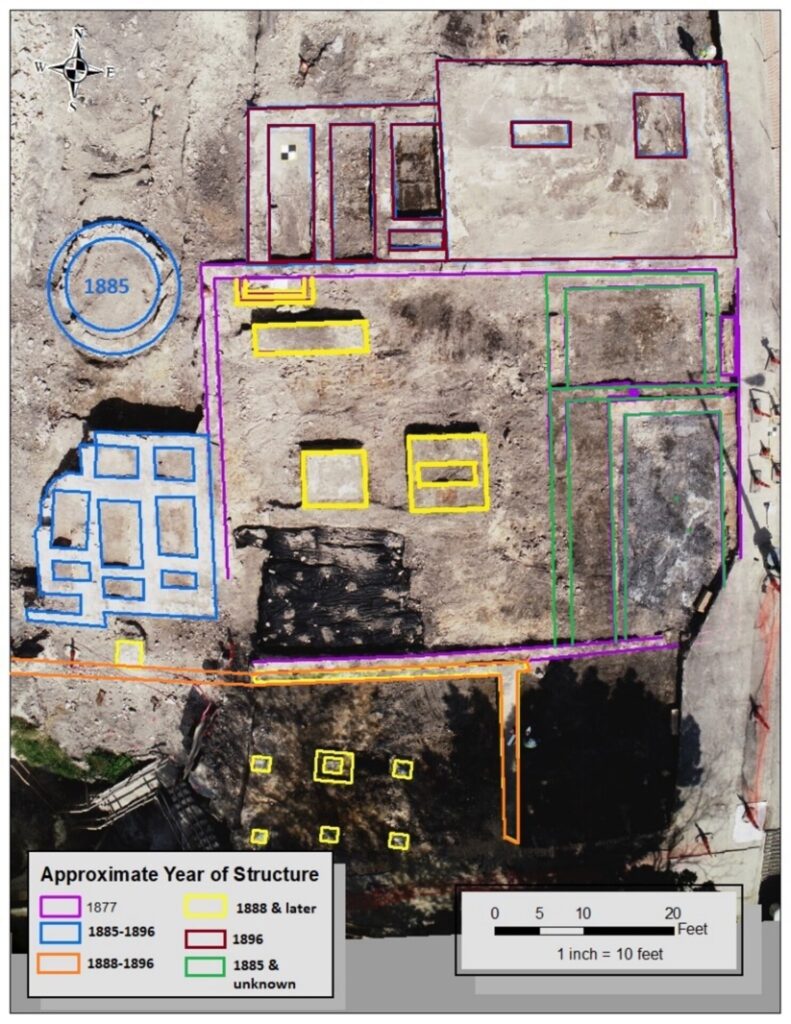
Aerial view of the project area, March 2020
The layered history of this space, now called the St. James AMEC Culture Crossing, is reflected not only in the various peoples that inhabited it but also in the numerous organizations that gave input on what the site has become today. In today’s blog, we’ll be celebrating the teamwork and collaboration with various dedicated organizations and individuals whose hard work has allowed us to preserve the uncovered site.
Celebrating Collaboration in the AME Culture Crossing Project
When the River Authority rediscovered the historic site, the U.S. Army Corps of Engineers was called in at the federal level due to their regulatory involvement with the San Pedro Creek Improvements Project. The site was of incredible cultural significance but necessitated the redesign of the space to still adhere to the project’s priority of flood control.
As the project continued developing, the Texas Historical Commission also became involved in the project, offering their expertise and giving the space context within state history.
At the local level, the River Authority engaged with numerous community members and organizations. In addition to the construction and architecture partners of Sundt, HDR, and Ford Powell & Carson, Raba Kistner’s archeological team, was enlisted to work with the City of San Antonio’s Office of Historic Preservation.
The more the River Authority and our partners learned about the site, the more interest we received, adding partners such as the University of Texas at San Antonio and Bexar Heritage.
Assorted archaeological findings discovered in and around the project area.
Through deed research, it was discovered the property was formerly the Klemcke Soapworks Factory from 1847 to 1859 and then sold to the Menger family, still acting as a soap factory until 1871.
In further digging, the church’s cornerstone was uncovered, bringing in the involvement of the still-active St. James AME Church and its members, as well as the San Antonio African American Community Archives and Museum (SAAACAM).
The St. James AME Church began leasing the site in 1871, eventually purchasing the property in 1873 and expanding the building’s footprint to what is today the preserved structure. In 1877, the AME Church left the site.
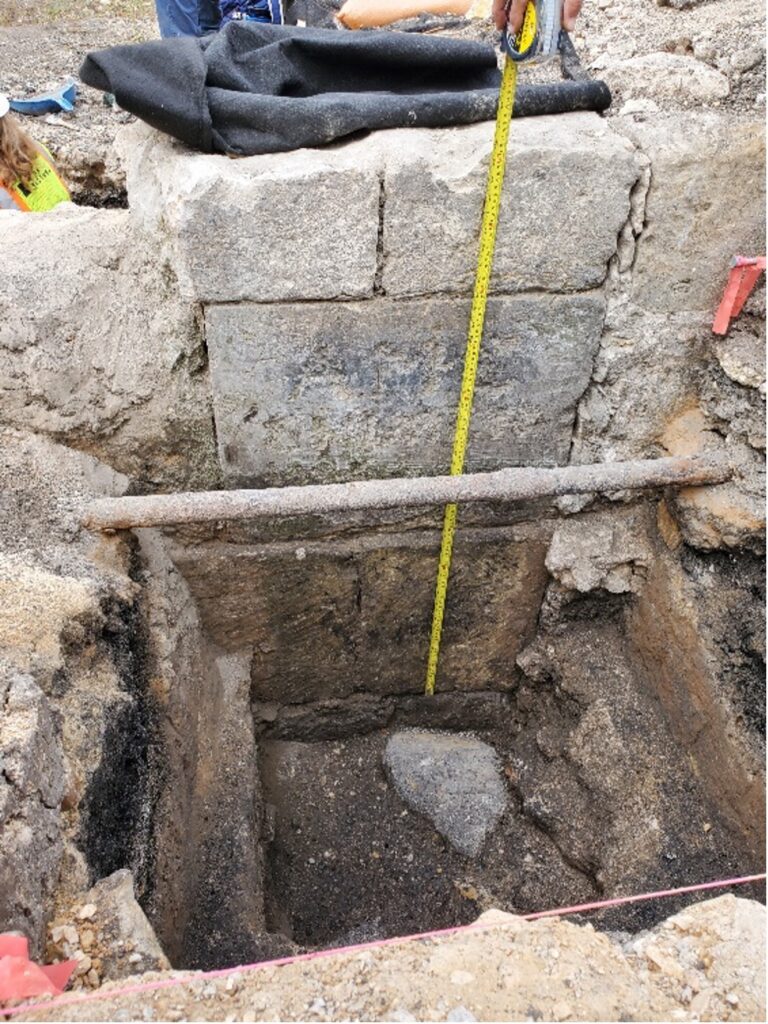
The uncovering of the 150-year-old St. James AME Church Cornerstone.
From that point on, the St. James AME Church was invited to have a seat on the existing San Pedro Creek Culture Park Citizen’s Advisory Committee, giving them a voice on the future of the site and its context within the rest of the project. A special thank you to former Pastor Al Smith and Reveron B. Smith for their strong representation of the AME Church, as well as Lon Taylor, a member of the church and the Citizen’s Advisory Committee.
These local partners were instrumental in uncovering and preserving the site’s history. Their valuable insight helped define what the space would look like—preserving the structure and honoring its history while also ensuring the function of flood control was not impaired.
Bringing Public Art on Board
We appreciate the San Antonio River Foundation’s private project to create a shade structure with interpretive elements and look forward to their progress. The public art itself is a big collaboration between international artist Gordon Huether and San Antonio native, Andrea “Vocab” Sanderson. The site will serve as a lasting tribute to the historical significance of the site and the broader narrative of freedom and equality that Juneteenth represents. This project, like Juneteenth, underscores the importance of remembering and honoring the struggles and triumphs of those who fought for freedom.
The design process involved community engagement sessions, reflecting the spirit of Juneteenth, where collective efforts and voices shape the path forward. This partnership exemplifies how multiple agencies and the community united to honor San Antonio’s rich, layered history.
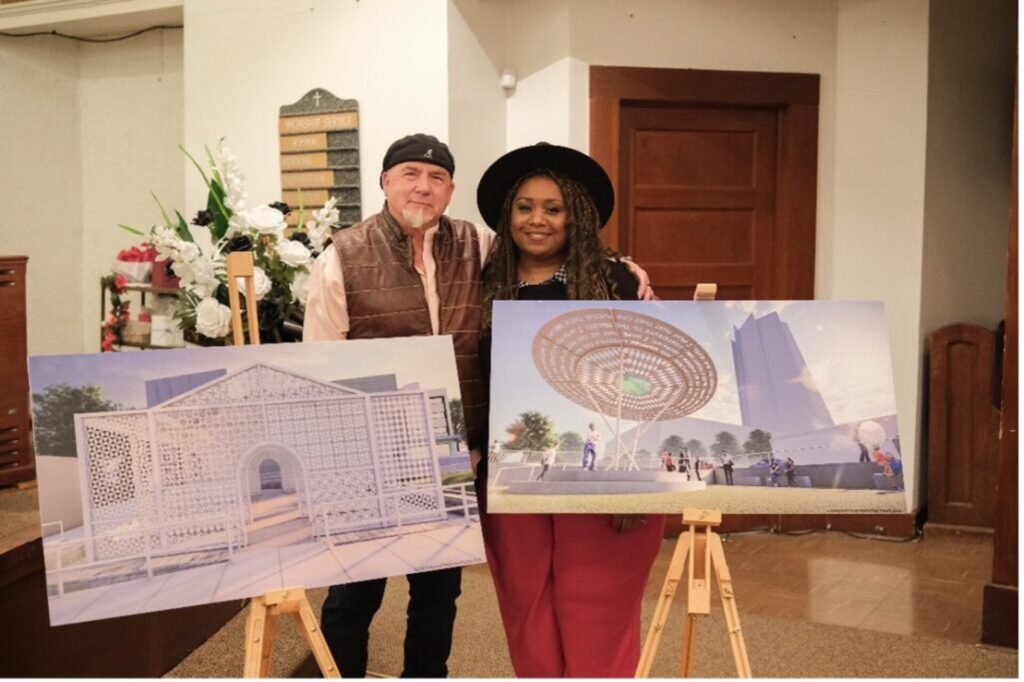
Artist Gordon Huether with San Antonio Poet Laureate Emeritus Andrea “Vocab” Sanderson
Get Involved
The St. James AMEC Culture Crossing serves as a gathering place where the community can celebrate its history and heritage, much like Juneteenth itself. For those interested in learning more about this project or contributing to its realization, additional information and donation opportunities are available on the River Foundation’s website.
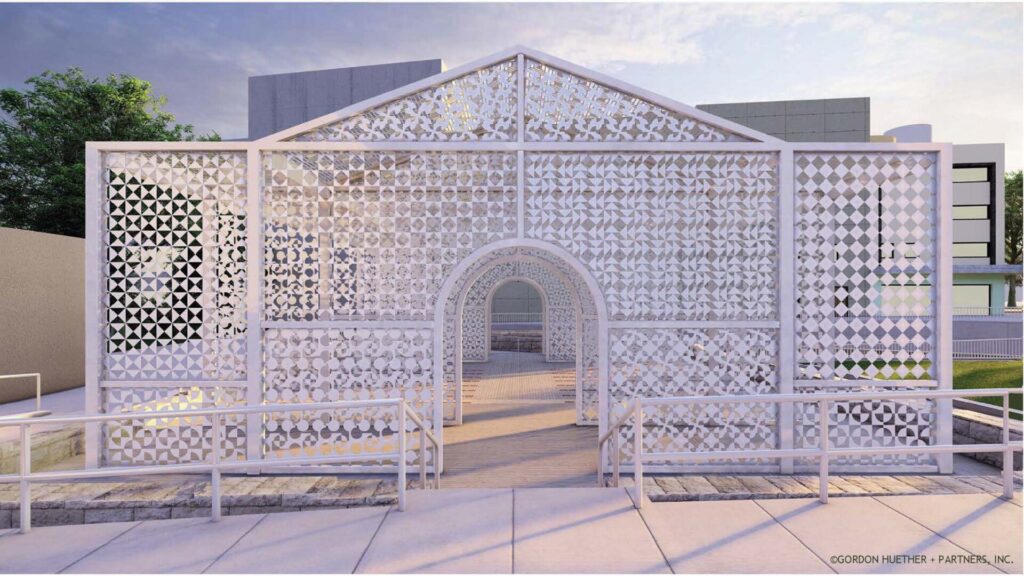
Rendering of Huether’s proposed design.

